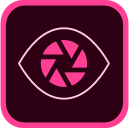Recently I finished a week-long workshop in memoir comics at the Center for Cartoon Studies, taught by Melanie Gillman. They are an excellent teacher, and I had wonderful classmates, and so I learned a lot during the week.
One of the practices Melanie recommended was creating journal or diary comics every day or as often as possible and putting these on social media. This keeps you practicing and gets you into self-publishing and hopefully building an audience for your work.
These comics are meant to be completed, start to finish, in 30-50 minutes or so (we had 50 minutes in class and it was amazing what people could do in that time). For inspiration we looked at (among other things) a web comic called
Deep Dark Fears and an anthology called
Lies Grown-ups Told Me.
Here's an example of my comic (done in 50 minutes, remember!) for a prompt like "tell me about a lie a grown-up told you that you believed at the time."
For short comics like these, I don't want to spend time thinking up subjects, so it's a case where a writing prompt is really helpful to me.
But to really spark my imagination, I find I can't come up with the prompt myself. It's best if it coms from outside of me, from something random, like pulling a paper out of a hat.
So where do I find such prompts? Below are a few sources. These are all prompts intended for prose, but I don't think it really matters that much in terms of prompting one's thinking.
I think reshaping them to fit a daily journal comic, something you could do in 50 minutes, is probably most important. For me, no matter how the prompt is written, I always try to rephrase it: "Tell me about a time that..." That helps me.
So a prompt like "How good are you at saying goodbye?" becomes "tell me about a time you said goodbye and felt really good about it (or really bad about it)." Or "how comfortable are you with lying" becomes "Tell me about a time when it was the right thing to tell a lie." That sort of thing.
Anyhow, my favorite book of prompts is Natalie Goldberg's
Old Friend From Far Away. I also love her classic book
Writing Down the Bones, which has some prompts and also some thoughts about writing.
I also very much enjoy
this huge list from the NYT. It is intended as a list for teachers to use with students, but with a little revision as suggested above, I think it works well for one person. And it's such a huge list you are bound to find something there to prompt you!
I find two other online collections valuable for inspiration as well: the essays collected at
This I Believe and the work done at
StoryCorps. Both of these have huge online archives you can explore for ideas.
Also, if you haven't seen Lynda Barry's book
SYLLABUS (also her book
What It Is), check those out, as she has some excellent methods for helping you develop your own prompts.
On memoir as a genre, I love Mary Karr's book,
The Art of Memoir, and Marion Roach Smith's book,
The Memoir Project. Notably, Marion Roach Smith is strongly against "prompts" and exercises as they distract you from writing your "real" memoir.
I think this is a terrific point. Doing exercises without a clear intent can be a waste of time and energy.
This is why the idea of a daily comic which you SHARE in some way is so attractive (and perhaps terrifying). You have a prompt, you have an hour, and you learn to focus and complete quickly and in a way meant for readers. And then you pop it up on Instagram or Facebook or Twitter or share with family and friends in some other way. You can find me on Instagram: @Elizabeth_Trembley .
The best writing book EVER is Anne Lamott's
Bird by Bird. No prompts, but just the best writing book ever. :-)







